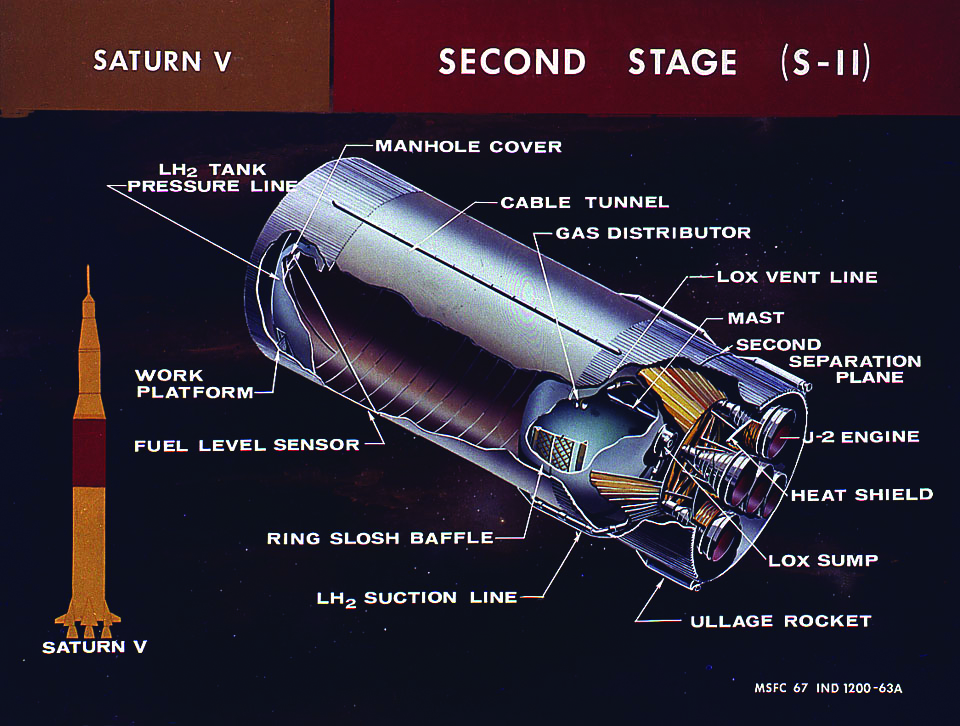One Giant Leap For Rocketry
Raucous celebrations on Earth were fading into the early morning hours of July 21, 1969, as Jim Odom stepped outside his Decatur home and cast his eyes toward Earth’s closest neighbor – the moon.
Like millions of other Americans, Odom had watched with rapt attention as Neil Armstrong and Buzz Aldrin of the Apollo 11 mission made “one small step for man, one giant leap for mankind” on the lunar surface earlier in the evening.
Now, in the silence of the muggy Decatur evening, Odom had a moment to reflect on the achievement. As chief of the engineering and test operations branch for the second stage of the Saturn V launch vehicle, Odom had spent the majority of his career to that point with the singular objective of putting man on the moon.
“Looking at the moon and knowing that had happened was probably one of the most humbling experiences that I can ever recall,” Odom said. “It was not only a sense of personal satisfaction, but also a sense of national pride.”
Odom’s career path to that history-making mission was serendipitous. After graduating from Auburn — then known as Alabama Polytechnic Institute — with a bachelor’s degree in mechanical engineering in 1955, Odom joined Chemstrand Corp. in Decatur, Alabama, and had no ambitions of ever working in the public sector.
However, he was drafted into the Army in 1956, joining the U.S. Army’s rocket research and development team at Redstone Arsenal in Huntsville. During those years, he worked on the groundbreaking Redstone and Jupiter rocket programs.
In 1959, months prior to the formal establishment of the Marshall Space Flight Center, Odom’s team became part of NASA, working on the development of earth satellites and unmanned space probes. And then, in 1961, President John F. Kennedy signaled his intent to put men on the moon by the end of the decade.
It was an ambitious program, and the men and women of NASA knew it from the jump.
“We were all almost totally consumed by it for those years that we worked on it because it was a very aggressive program and a very difficult one,” Odom said.
“We were familiar with launch vehicles because we had been doing that for a few years, but nothing of this size and this magnitude.”
The Saturn V launch vehicle was divided into three stages. Odom led the engineering and test office for the second stage, which was a 33-foot diameter liquid hydrogen and liquid oxygen rocket with five engines.
“It was an engineering challenge from day one,” Odom said.

All of the stages typically would have five ground test vehicles. NASA would build a battleship, a heavy-duty rocket stage used to test configuration and integration of a launch vehicle, for propulsion testing. This would include a structural test article, a dynamic test article and an all-systems test article.
“The other two stage programs had very few ground failures,” Odom said. “On stage two, we lost virtually all of our ground test stages before we were finished with them. From an engineering standpoint and from a test standpoint, we were on the critical path literally every month for the entire extent of the design and development period of the vehicle.”
But after every failure, Odom’s team would go back and learn from it and then realign the program accordingly.
In these years, Odom also had the opportunity to learn from legendary aerospace engineer Wernher von Braun, the first director of NASA Marshall and the chief architect of the Saturn V launch vehicle. Having the opportunity to travel with von Braun gave Odom a glimpse into the German engineer’s mindset that few had.
Von Braun’s exemplary leadership instilled Odom with confidence and attention to detail.
“When I would have a hardware failure, he never criticized me. And this is true for everybody that was in roles like mine,” Odom said. “We were never criticized by him. He only wanted to know two things. When we had a failure, he asked, ‘Do you know why it failed and do you know what you’re going to do to fix it or to work around it?’”
In 1973, Odom received the NASA Exceptional Service Medal for his leadership of the design, development, testing and launch support of the Saturn V launch vehicle second stage. The Saturn V project was just the beginning for Odom’s career at NASA. He would go on to manage the external tank project for the Space Shuttle, the science and engineering directorate for NASA Marshall and the Hubble Space Telescope Project, among other postings.
When Odom looks back on his career, he marvels at the fact that for having worked in 12 positions over a 60-year career, he only ever interviewed for one – his first job at Chemstrand Corp. Because of his previous experience and record, he was always asked to manage the next big project.
And Odom attributes that in part to the engineering education he received at Auburn.
“Every one of those jobs was a big step up for me,” Odom said. “Each one of them were big key jobs, and I’m sure I went into each one of them with some intimidation. But when I look back now, there was not one position that I was not prepared for from an engineering standpoint. I was extremely fortunate and extremely blessed with the education and experience that I received at Auburn. It was absolutely first-class.”
Media Contact: ,
